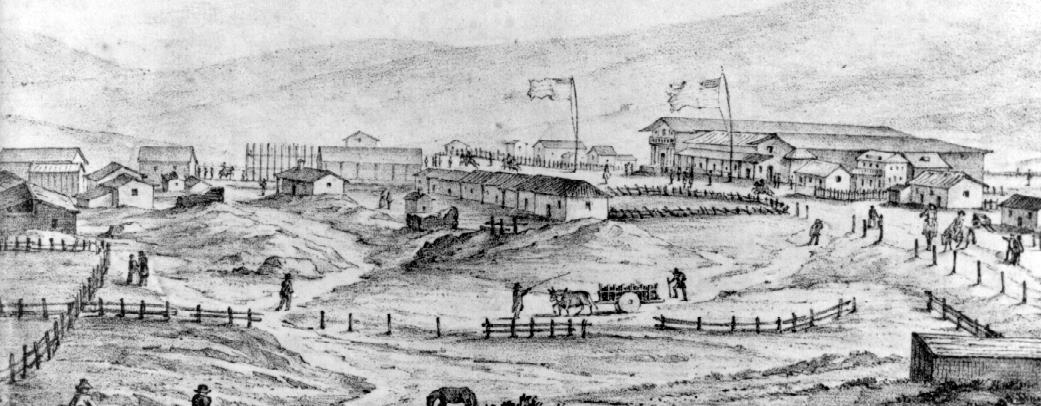
The event is described by a sailor on the USS Portsmouth, Joseph T. Downey as follows: "By 7 bells matters were all arranged, and the party of Marines and Carbineers landed on the bank, and after being marshaled in due order, the Band, consisting of one drum and one fife, struck up Yankee Doodle, and off we marched keeping time as best we might, to conquer the redoubtable town of Yerba Buena. As we had anticipated, there was no foe to dispute our right of possession…On we went then through sand and some little mud, until through the skillful pilotage of our Old Man, we at last found ourselves brought up all standing in a hollow square, round the Flag Staff. Here, had time allowed, our Old Man would no doubt have inflicted a speech if not a sermon upon us, but Fate decreed to the contrary, consequently the Flag was bent onto the Halyards and by a flourishing and a patronising invitation, the whole of the male population of Yerba Buena, comprising, dogs and all, some 25 or 30 souls were called into the Square. The oration was delivered, the Proclamation read, and then the Autocrat (Lieutenant John S. Misroon) with his own hands hoisted the Colors, while three hearty cheers from the bystanders, a prolonged howl from the dogs, and a salvo of 21 Guns from the Ship completed the affair."
As Presented in San Francisco, 1806-1906 by Jeanne Van Nostrand, Plate 11.

With the arrival of men and material from the Expeditionary Forces sent from New York and Utah, work started immediately on repairing the quarters, storehouses and the road from the Presidio to the beach. Companies H and K were stationed at the San Francisco Presidio under Major Hardie as commandant of the post with Captain Folsom and Dr. Parker. Here these companies remained to the end of their service, except that Company H exchanged posts with the Sonoma Company for a short time in August 1848. Troops cut down trees in Marin County where they built a sawmill. They thereby provided sturdy redwood material for construction and repair. They also restored and enlarged the Castillo and built a new road to connect the fortress and the main post. This progress halted when the terms of enlistment for the New York Volunteers expired. They served until the end of the war, which occurred on May 30 and were mustered out on August 7, 1848. Replaced by only a small number of men from the Third U.S. Artillery Regiment, the garrison at the Presidio further dwindled when the discovery of gold at Sutter's Mill brought about desertion. With an inadequate work force and limited funds the Presidio of the late 1840s through the late 1850s differed little from the past. The overall appearance of the Presidio remained similar to that of the late Spanish through Mexican periods of occupation. Three or four long shed-like barracks and cottages for officer's quarters were added to the original adobe buildings.


